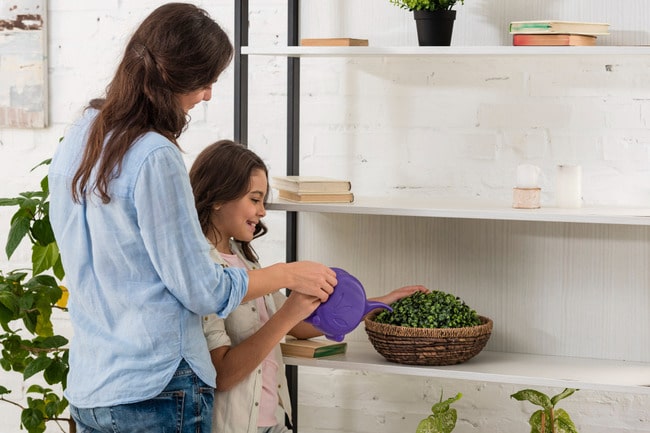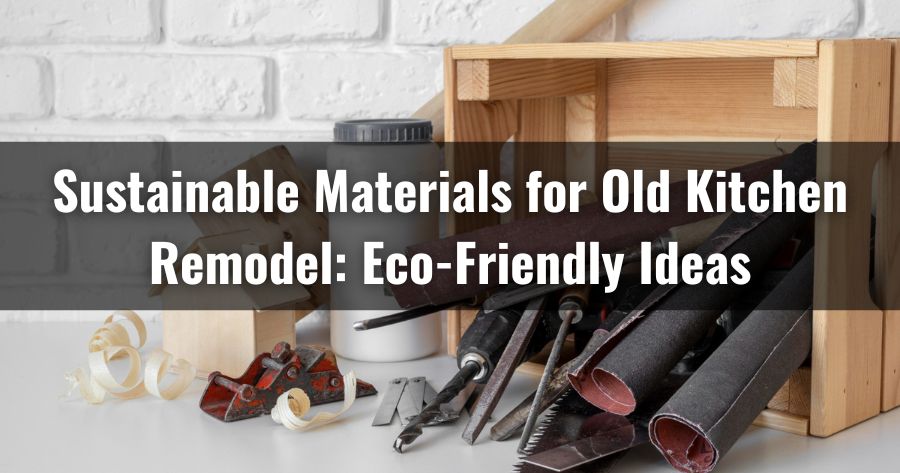When you step into an aging kitchen, it’s easy to feel overwhelmed by peeling paint, worn floors, and outdated countertops. But what if those imperfections could become the foundation of a greener, healthier space? By choosing sustainable materials for old kitchen remodel, you can breathe new life into your cooking area while reducing your environmental footprint and enhancing indoor air quality.
Renovating with eco-friendly materials isn’t just a trend it’s a long-term investment in your home’s health and style. Over the years, I’ve learned that even small choices like opting for low‑VOC paint or reclaimed lumber can transform the feel of the kitchen and create a space that’s as responsible as it is beautiful. Let’s explore how to craft a sustainable kitchen remodel that balances aesthetics, functionality, and environmental stewardship.
Key Sustainable Materials for Old Kitchen Remodel
Embracing a sustainable kitchen remodel means looking beyond price tags to assess the environmental impact of each component. The table below highlights top material categories, their green credentials, and estimated price ranges to help you plan:
| Material Category | Green Benefit | Estimated Cost |
|---|---|---|
| Reclaimed Wood Cabinetry | Diverts waste, showcases natural beauty | $50–$150 per sq ft |
| Bamboo Flooring Option | Rapidly renewable, strong underfoot | $3–$8 per sq ft |
| Recycled Glass Countertops | Reuses post‑consumer glass, vibrant colors | $40–$100 per sq ft |
| Cork Flooring | Biodegradable, naturally antimicrobial | $4–$10 per sq ft |
| Low‑VOC Paints | Reduces volatile organic compounds in indoor air | $30–$60 per gallon |
| Energy‑Star Appliances | Cuts electricity use, lowers utility bills | Varies by appliance |
By charting out these materials and practices, you gain clarity on where to invest for maximum environmental and aesthetic return.
Eco-Friendly Cabinetry Options
Updating your kitchen cabinets is one of the most transformative steps in a kitchen renovation. Instead of defaulting to brand-new stock cabinets, consider these eco-friendly kitchen choices:

1. Reclaimed Lumber Cabinetry
Reclaimed wood rescued from old barns, factories, or even wine barrels carries history in every plank. Beyond its rustic charm, salvaging lumber prevents perfectly good wood from going to landfill. I once installed reclaimed pine doors in a small cottage kitchen; years later, they still gleam, telling a story no new cabinets could match.
2. Bamboo Cabinet Doors
Bamboo grows remarkably fast compared to traditional hardwoods, making it a superstar in sustainable living. Its strength rivals oak while offering a fresh, modern look. Bamboo doors are perfect for a green kitchen makeover that combines durability with eco-responsibility.
3. Recycled-Content MDF & Paper Composite
For a lower price point, cabinets made from recycled MDF or paper composite offer smooth surfaces and customizable styles. These materials often use formaldehyde‑free adhesives, reducing volatile organic compounds and improving indoor air quality.
Green Countertop Materials for a Healthier Kitchen
Countertops occupy prime real estate in any kitchen. Choosing the right countertop material can boost both sustainability and style.
| Countertop Type | Pros | Cons |
|---|---|---|
| Recycled Glass Surfaces | Reuses glass waste, available in dazzling hues | Can chip under heavy impact |
| FSC‑Certified Butcher Block | Warmth of wood, certified sustainable source | Requires periodic oiling |
| Concrete with Recycled Aggregate | Industrial chic, customizable pigments | Prone to hairline cracks if not sealed well |
Recycled glass countertops shimmer under task lighting, while butcher block from FSC‑certified forests lends warmth to both modern and farmhouse kitchens. For the DIY enthusiast, mixing small batches of concrete with crushed recycled glass creates a unique, custom surface at a fraction of the usual cost.
Sustainable Flooring Options that Last
Floors take a beating in busy kitchens, so choosing a durable, eco‑friendly flooring option is essential for a successful remodel:
1. Cork Flooring
Harvested from the bark of cork oak trees without felling them, cork flooring regenerates naturally. Its soft, cushiony feel reduces fatigue, and its antimicrobial properties help maintain a healthy kitchen environment.
2. Bamboo Flooring
Just like bamboo cabinetry, bamboo floors grow rapidly and resist moisture when properly sealed. Strand-woven bamboo, in particular, offers exceptional hardness ideal for high‑traffic areas.
3. Reclaimed Hardwood Planks
Donated or salvaged from old structures, hardwood planks bring character and patina that new flooring simply cannot replicate. Refinishing reclaimed wood costs less than milling new planks and reduces demand for fresh timber.
Low‑VOC Paints and Natural Finishes
Walls, trim, and cabinetry deserve finishes that safeguard indoor air:
a. Low‑VOC or Zero‑VOC Paints
Brands like Benjamin Moore’s Natura or Sherwin‑Williams’ Harmony minimize volatile organic compounds, cutting down odors and harmful emissions. A fresh coat of eco-friendly materials–certified paint can make your kitchen feel brighter without compromising air quality.
b. Natural Oil and Wax Finishes
For wooden countertops or open shelving, natural oils (like tung or linseed) and beeswax blends penetrate deeply and accentuate wood grain. They offer water resistance and a subtle sheen—all without harsh chemicals.
Energy‑Efficient Appliances and Lighting
A truly sustainable kitchen renovation goes beyond materials to include systems that reduce consumption:
1. Energy Star Appliances
Look for the Energy Star label on dishwashers, refrigerators, and ovens. These appliances use less electricity and water, saving money over their lifespan. In one remodel, swapping an old fridge for an Energy Star model cut annual energy use by over 20%, directly lowering utility bills.
2. LED and Daylighting Strategies
LED lamps delivered via under‑cabinet strips or pendant fixtures offer focused task light while drawing minimal power. Pair artificial lighting with daylighting strategically placed windows or skylights—to reduce reliance on electric light during the day.
Understand Sustainability Certifications
Not all eco-friendly materials are created equal. When shopping for cabinetry, flooring, or finishes, check for reputable certifications like FSC, GreenGuard, or Cradle to Cradle to ensure they meet environmental and health standards. For a deeper dive into how to choose greener products, explore the EPA’s guide to greener products, which outlines trusted labels and what they mean for your remodel.
Strategies for Your Sustainable Kitchen Renovation Project
Embarking on a remodeling project with green goals calls for thoughtful planning:
- Source Locally: Reducing transportation emissions saves both money and carbon. Visit nearby reclamation yards for reclaimed lumber or recycled tile.
- Repurpose What You Can: Donate or upcycle existing cabinetry, appliances, and fixtures. According to Real Simple, 43.5% of homeowners donate cabinets during a remodel, while 37% donate appliances.²
- Waste Reduction: Plan material cuts to minimize scrap and recycle demo waste—metal, glass, and even drywall can often be diverted from landfill.
By integrating sustainable kitchen design principles—like energy-efficient appliances, recycled materials, and low‑VOC finishes—you’ll create a space that’s as kind to the planet as it is to your daily routine.
Conclusion: Sustainable Kitchen Renovation Takeaways
Choosing sustainable materials isn’t just about checking boxes—it’s about crafting a kitchen that supports your health, your wallet, and the environment.
- Opt for reclaimed or rapidly renewable materials like reclaimed wood and bamboo.
- Prioritize indoor air quality with low‑VOC paints and natural finishes.
- Invest in energy‑efficient appliances and LED lighting to reduce long‑term costs.
- Plan for waste reduction and local sourcing to minimize carbon impact.
Every green choice brings you closer to a sustainable and stylish kitchen that stands the test of time. We hope this guide inspires you to embark on your own green kitchen makeover. If you enjoyed these ideas, subscribe to our newsletter, follow us on social media, and explore our related articles for more eco-friendly kitchen tips.
FAQ’s
How can I maintain sustainable materials after remodeling your kitchen?
Maintaining sustainable materials involves using gentle, non-toxic cleaners and regular upkeep. For example, reclaimed wood used in cabinetry or a unique kitchen island should be sealed properly and cleaned with vinegar-based solutions. This helps preserve their look and extend life without introducing harmful chemicals. If you’re incorporating sustainable materials like bamboo or cork, avoid abrasive scrubs. The goal is to make your kitchen remodel last while keeping your home safe and eco-friendly.
Are there space-saving tricks when adding a kitchen island during an eco-friendly kitchen remodel?
Absolutely! If you’re working with a smaller layout, consider a movable kitchen island made from reclaimed or natural materials. These islands can double as prep space and storage while keeping the flow open. For compact kitchens, an island with built-in shelving or compost bins adds function without sacrificing sustainability. It’s all about balancing functionality with your goals for a sustainable kitchen remodel that still feels spacious.
What’s a safe alternative to VOC-heavy finishes in a bathroom or kitchen project?
When renovating your kitchen or bathroom, opt for low-VOC or VOC-free paints and sealants. These are safer for indoor air quality and align with eco-conscious goals. Incorporating sustainable materials is only part of the equation finishes matter too. Beeswax, linseed oil, or water-based polyurethanes are great sustainable options that help create a healthier kitchen environment without harsh chemical exposure.
How long does it typically take to complete a sustainable kitchen remodel?
A sustainable kitchen remodel can take anywhere from 6 to 12 weeks depending on your scope, materials availability, and contractor experience. If you’re sourcing eco-friendly materials, like recycled countertops or custom cabinetry made from sustainable forestry practices, expect slightly longer lead times. Planning ahead and having a flexible mindset helps you stay on track while ensuring every piece supports your dream of a greener kitchen.
What are some affordable, eco-friendly materials for your kitchen?
For anyone on a budget, recycled materials like glass tiles or salvaged wood offer a stylish and sustainable option. Cork and bamboo are both durable and sourced using sustainable forestry practices, making them a great sustainable option for flooring or accents. Upcycled furniture or repurposed countertops can also transform your kitchen without breaking the bank. Look for certified labels that ensure your materials are responsibly sourced.
Can I still use stylish kitchen appliances in an eco-friendly kitchen?
Definitely. Energy-efficient appliances now come in sleek, modern designs, letting you maintain style without compromising function. Look for Energy Star-rated options when shopping for refrigerators, ovens, or dishwashers. These help make your kitchen look modern while reducing your electricity and water use. Incorporating sustainable kitchen design doesn’t mean sacrificing convenience or aesthetic.
What’s a common mistake when trying to create a sustainable kitchen?
One big mistake is focusing only on materials and ignoring energy efficiency. Many people forget that kitchen appliances play a huge role in a home’s overall footprint. Even with the best building materials, an old, inefficient fridge can undercut your efforts. Another is skipping local sources—choosing imported “green” materials may add unnecessary emissions. The best strategy is to opt for sustainable practices across the board, not just in surfaces.
Can I apply these sustainable strategies for your kitchen to a rental?
Yes, even renters can apply eco-friendly updates. Simple swaps like LED lighting, natural materials for window treatments, or adding plants to improve air quality can make a big impact. You can also add a small, eco-friendly kitchen island that’s freestanding and moveable. These upgrades help make your kitchen feel greener without permanent changes or landlord approvals.
Is it possible to get natural light in your kitchen without a full remodel?
Yes, you don’t always need to tear down walls. Start by using reflective materials for your kitchen such as glass or metal backsplashes that bounce light. Installing tubular skylights or expanding existing windows can help too. Even something as simple as removing heavy curtains and using eco-friendly paint in lighter shades can dramatically improve natural lighting and brighten your space. Little changes go a long way in creating a lighter, sustainable space.





